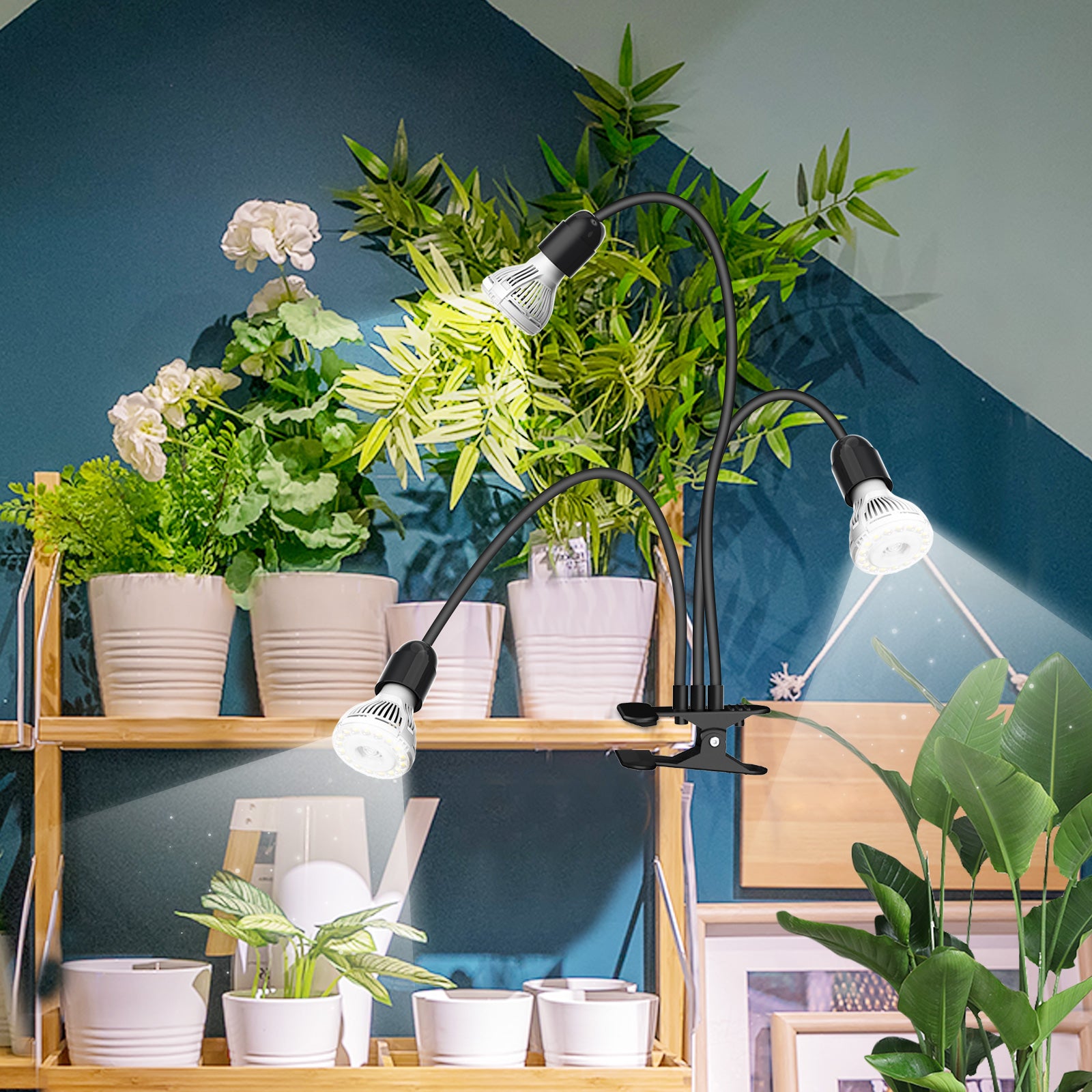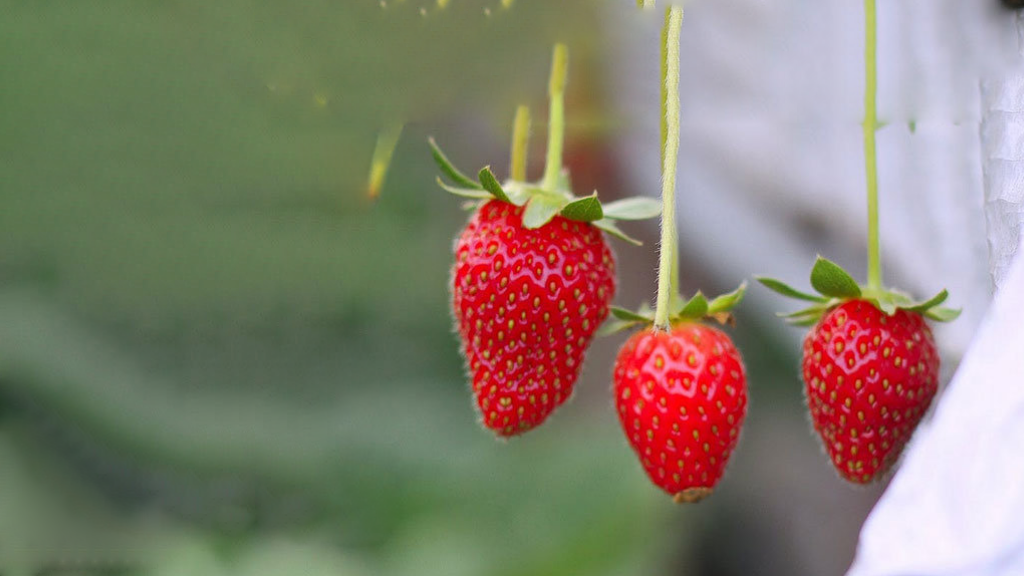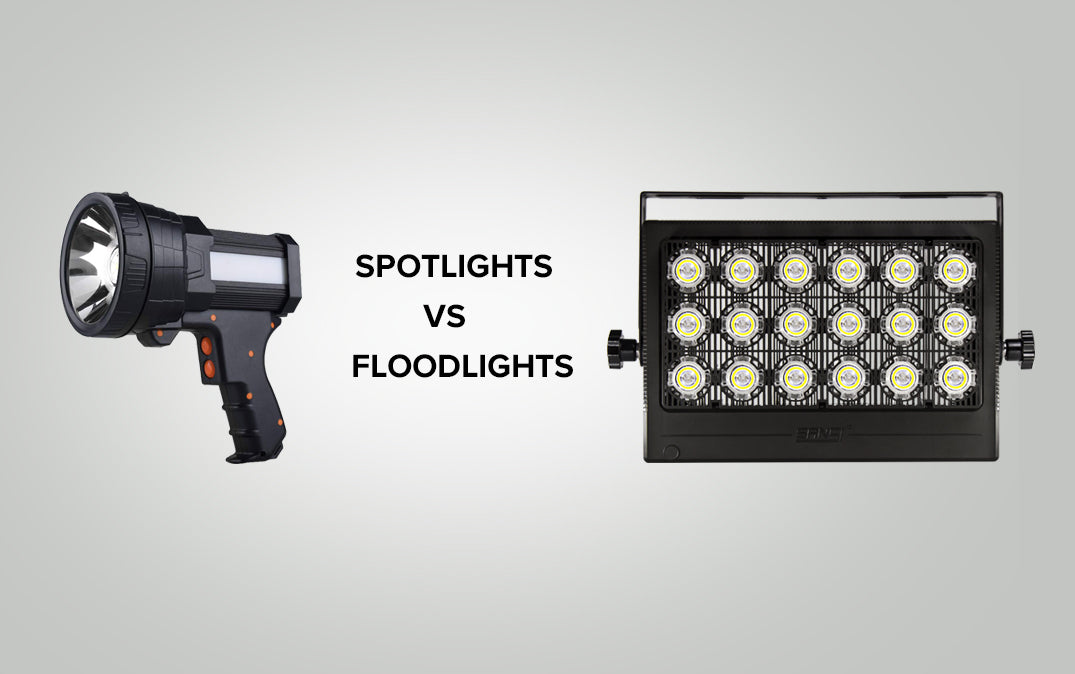
Winter is the hardest time of the year for houseplants. Especially tropical plants. The drier air, the lower levels of light and the cooler temperatures all lead to a heap of problems for indoor gardeners. One of the best ways to reduce the impact of winter on your indoor plants is to recreate their natural environment as much as possible and a Full Spectrum LED Grow Light can do this.
Why plants need light when they grow?
At first, we should know what plants need when they grow. There are four main elements for the growth of plants: air, water, nutrition, and light. Nutrition provides essential chemical materials for plants. Air contains CO2 and H2O which are necessary during the photosynthesis and they can be transformed into oxygen and glucose. Light works as a catalyst that motivates this process.
1. What's the role of the sun for the growth of plants?
As is known to all, the sun is the main source of light in nature. So it plays an important role in the growth of plants.
| The composition of sunlight | |||
| Components | Proportion | Wavelength | Functions |
| Visible light | 50% | 380-7500nm | Promote photosynthesis |
| Infrared light | 43% | 700nm | Provide heat and promote flowering |
| UV | 7% | 10-400nm | Ignite plants to create defense proteins, Speed up the germination process of seeds |
Sunlight is broken down into 3 main components due to their varying wavelengths. Natural sunlight contains 50% visible light, 43% infrared light and 7% ultraviolet.
Each one of these components has a different function in the growth of a plant. Visible light is made up of various colors on the light spectrum that vary across a wavelength range between 380 nm to 750 nm. For photosynthesis plants use a wavelength between 400 & 700 nanometers. Thus making visible light produced by the sun ideal for plants in order to help them photosynthesize. The second biggest component of sunlight is infrared light. Infrared light sits right on the edge of the visible light spectrum at 700 nanometers. It provides heat and has been found to play a part in the blooming of flowers. Especially indoor grows using fluorescent lights without infrared. Plants have been found to not bloom until there is a suitable amount of infrared light available. Finally, ultraviolet light. One of the shortest wavelengths produced by the sun varying from 10-400 nanometers. As far as UV light is concerned with plant growth, it provides many benefits. Previously it was seen as a bad thing by lighting manufacturers and was also attempted to be removed from their lights. However, today is a different story. UV is well proven to ignite plants to create defense proteins which lead to better colors, tastes, smells and resistance to diseases. Overall making healthier stronger plants. UV also speeds up the germination process of seeds.
Light spectrum warning
Although all three of these lighting spectrums each play a specific part in helping a plant grow and develop into something beautiful. They come with a warning and should be used appropriately. Too much of any of these three light compositions will result in an unhealthy plant! So be careful!
2. How much light do plants need a day?
The question of how much light does a plant need really comes down to the plant itself. There are 3 categories for house plants. Short-day plants, long-day plants, and day-neutral plants. Short day plants are plants that flower when they are exposed to long periods of darkness. Long day plants are plants that require longer periods of light and day-neutral plants flower regardless of the amount of light they receive. Here are some examples of plants with each category:


 There are many more plants to be listed under each of these categories. However, the most important information is to know of the 3 categorizations in order to best help your plant to grow.
There are many more plants to be listed under each of these categories. However, the most important information is to know of the 3 categorizations in order to best help your plant to grow.
3. What if plants don't get enough light?
Now it's well known what will happen if plants get too much light but what happens when they don't get enough? If light's do not get enough light they will not produce enough chlorophyll. When there is a lack of chlorophyll production in a plant and is resulting in issues. This process is called chlorosis. Chlorosis is incredibly dangerous to a plant and its initial signs are yellow leaves due to a lack of iron within the plant. So if you think your plant is not getting enough light, watch out for yellowing of the leaves in order to prevent this damaging disease.
To provide lights for your plants in winter, don't miss a full spectrum LED grow light in 2019
The first three elements are available from nature for the whole year. However, in winter, the sun shines much weaker than usual. So they can't get light directly from the sun.
1. Why we should use a full spectrum LED grow light in winter?
Because full spectrum LED grow lights can speed up the plant's growth cycle. The quality of light, the intensity of light, and the duration of light determine the growth cycle of plants. The variables within a grow can be controlled when LED grow lights are adopted. This means that the activation of the plant's growth cells and photoperiod of the plant is synonymous with the LED grow light. Thereby affecting the growth of the plant. In contrast, if the plant's lighting requirements can be matched with the plant accordingly the effect will be significant. The plant's growth cycle will be shorter, also the plant yield and quality will be improved. This is the reason for the emergence of plant lights. The efficiency and effectiveness of LED grow lights are the reason LED plant lights are now replacing traditional plant growth lights.


2. Factors to be considered when choosing a full spectrum LED grow light in 2021
Purchasing the best full spectrum LED grow lights would really benefit your plants this winter 2021. Now you know the composition of sunlight and what it can do for your plants, it is important to try and replicate it as much as possible. A full spectrum grow light can do this! And here are some elements to be considered when choosing a full spectrum grow light.
Selecting a light according to the needs and nature of your plant.
If it is a high-light requirement plant, buying a small-power ordinary plant grow light can't meet the growing needs of plants. If it is a shade-tolerant plant, it is not cost-effective to use a plant grow light that is too energy-consuming. In addition, if it is an LED plant grow light with different growth cycles, you can select it according to the characteristics of the plants, and the plants can be optimally grown in the best way.
SANSI provides two different kinds of grow light which can perfectly meet the needs of your plants. The SANSI Flowering LED Grow Light Bulb is designed for blooming, fruits. It can speed up flowering and make petals more vivid. Compared with other grow lights, each LED chip of SANSI Grow Light mixes all wavelengths. All wavelengths of light can be fully absorbed by plant photosynthesis without any waste like fluorescent. Blue-Ray (400-499nm) is good for taller and healthier leaves. Red-Ray (600-699nm) is good for blooming and fruits. SANSI's Full Spectrum Daylight LED Grow Light is suitable for the whole plant cycle. You can compare SANSI µmol/s and µmol/J with any light bulb designed for growing plants. SANSI's Ceramic LED Independent Pixel Heat Sink® design allows to increase the photon density (PPF/W) within the bulb. Best of all, the bulb emits a white light ideal for aesthetically pleasing environments. What's more, each SANSI LED chip has an evenly distributed spectrum between 400-780nm. Instead of having multiple LED chips with individual colors (white, blue, red, far-red), each LED chip has a mix of each color giving off a whitish glow.
PPFD

PPFD (Photosynthetic Photon Flux Density) is an incredibly important measurement to look at when purchasing a bulb. However, not many LED companies will show their customer's measurements. Also, a lot of the time when they do it they do not say what height they took this measure at. As this can affect the measurement. They are very happy to show the PPF and PAR of the light but not PPFD. However, as a company with over 500 in-house engineers, 2000 employees, and three advanced factories who are focused on the technological development of LED technology for 25 years, SANSI is willing to inform their customers of all of these measurements. This shows how serious they are about promoting a great trustworthy relationship with their customers and growing healthy plants. The average PPFD taken from 20 inches of height showed SANSI's 30W light at 110.30 and for the 40W at 161.30. PPF, PPFD & PAR are all important measurements when you are purchasing a grow light and SANSI gives their customers all of these. Making them a great company to buy from!
SANSI's 15W, 30W, 40W Full spectrum grow lights will really bring the sun into your home. SANSI's grow lights have been heavily researched and engineered to look and perform uniquely due to their use of ceramic and hollowed out structures. They aim to dissipate heat better than any other LED light on the market. SANSI's 15W, 30W, 40W Grow Lights are incredibly versatile as they can be used with timers and fit into standard E26 sockets.
LED plant grow light use precautions
Now that we have an LED full spectrum grow light, what should we do next to take care of our plants?
1. Regular switch plant grow lights. For example, if plants can get enough sunlight from 9 am to 5 pm, daylight can already meet their needs for growth. So we can turn on the grow light from 7 am to 9 am and from 5 pm to about 9 pm. In winter, the sun shines shorter, so we can supplement the light for a longer period.
2. Set a reasonable distance of lighting. Being too far from the plant, the light is not enough and it cannot achieve the best effect. Being too close to the plant, the light is not complete and it will cause the plant to receive uneven light. As a result, the plant growth situation can't reach your expectations. Different LED plant grow lights have different illumination distances, which need to be adjusted according to the product manual.
3. Pay attention to the maintenance of plant grow lights. When you buy a plant grow light, please follow the instructions provided by the merchants to install, check and maintain them. If you don't clean them at all or you clean them in an incorrect way, the damage to the light will be large.
Buying a full spectrum LED grow light now
If you would like to look up the other measurements of SANSI's grow lights and make a purchase, please click here .





1 comment
Royden Kowalchuk
I would like a light that I could get my plants( tomato, cumber, green inion ,cabbage etc. ) Don[t need an over kill just a small organic grow ;ight.
Leave a comment
All comments are moderated before being published.
This site is protected by hCaptcha and the hCaptcha Privacy Policy and Terms of Service apply.